Essential Garden Tools for Beginners: 2024
 Lee Burkhill: Award Winning Designer & BBC 1's Garden Rescue Presenters Official Blog
Lee Burkhill: Award Winning Designer & BBC 1's Garden Rescue Presenters Official Blog

Updated 2024: Starting to garden as a beginner can be a daunting process. You search the shed and find a rusty trowel, maybe a wobbly-handled spade that has seen better days. They may have even been left by the last owners, too ashamed to take them with them. You have a go at using them to find they're now bent or in a worse condition than when you started.
It all feels like a lot of trouble and hard work. Do not fear, though; help is at hand with these Top Tools for a Beginner Gardener!
With the help of the trusty Gardening Twitter community, I asked what everyone thought were the essential beginner tools. There was plenty of lively debate. Here are my top tools for the beginner gardener, which to buy first and a rough idea of costs before you get the gardening bug.
This page contains affiliate links for products I use and love. If you take action (i.e. subscribe, make a purchase) after clicking a link, I may earn some gardening commission which helps me keep the Garden Ninja Blog free for all.
"You're starting with a trowel?" established gardeners may cry. Surely you should start with a spade or a fork? Here's why a gardening trowel should be the first tool you invest in.
I always start with a quality gardening trowel. For simple reasons, new gardeners usually want to get some quick wins under their belt first. The trowel is the first tool you need for even the tiniest garden adventure. People don't usually start off gardening in acres, they do so in pots, window boxes and small manageable borders.
A trowel will become your new best friend as you take on your first gardening journey. Small enough to store anywhere and with so many uses. The trusty trowel is my number one beginner gardening tool.
Trowels are typically used to move soil for planting, smaller excavations, and lifting compost or grit. They are multi-useful lightweight gardening tools.
My best advice for the new gardener is to choose a steel-headed trowel. Plastic trowels are completely useless for anything other than light, airy compost, so don't waste your money.
I also used to prefer wooden-handled tools, but knowing how lazy I can be with cleaning them, I sometimes opt for a rubberised handle trowel instead. They have less chance of splitting, warping or cracking when you inevitably drop them. Also, beautifully waxed wooden handles soon become dusty and dirt-covered.
Now you can go nuts and spend a small fortune on tools with beautiful waxed wooden handles, hand-forged metalwork and other lovelies. I now only garden with one very high-quality trowel, which I use every day. I use a Niwaki Japanese trowel (which can be purchased from this affiliate link).
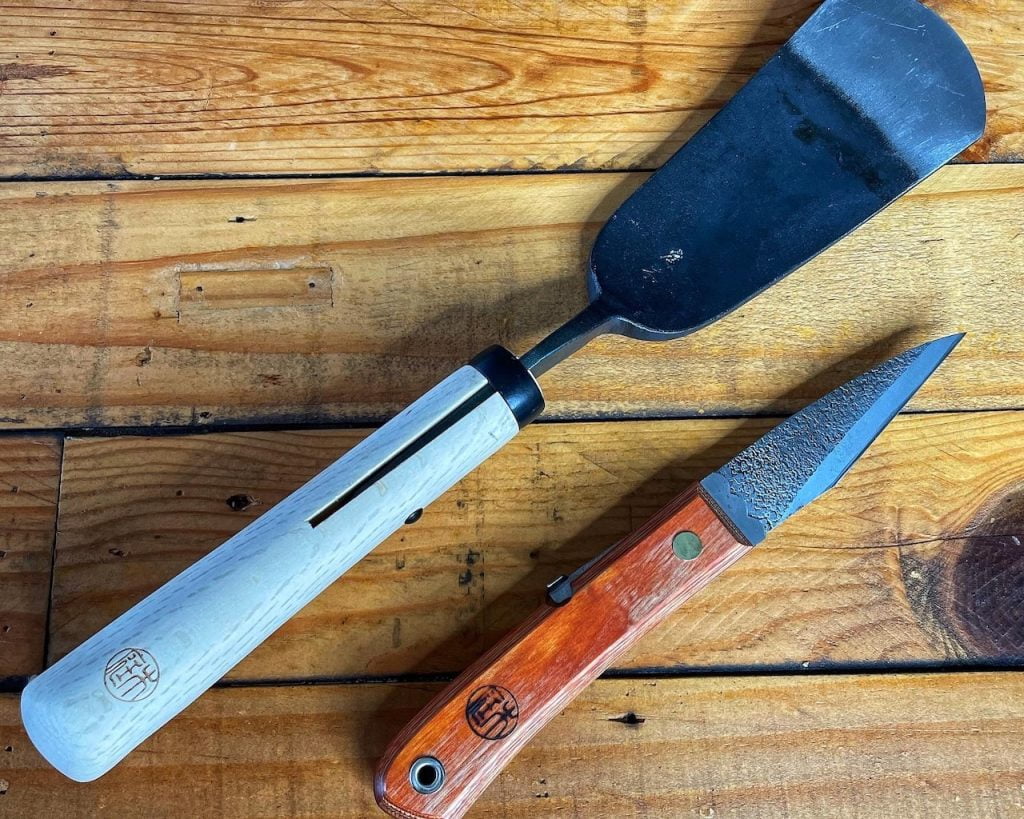
The alternative is to go cheap and cheerful. It's your first investment during your tentative steps towards gardening, so you decide!
Look to spend between £5-£35 on a decent gardening trowel. You may find that discount stores often have some awesome rubberised handle models. However, avoid plastic where possible as it breaks easily and often can't be recycled.
Ok, so now most experienced gardeners can finally jump for joy! It's time to talk about garden spades, the weapon of choice for all gardeners. When you think of gardening, the garden spade will probably be one of the first tools you think of, which is why it is number 2 in my best gardening tools guide.
Garden Spades are used for lifting more significant amounts of soil than, say, a trowel. They can dig, cut and excavate pretty much anything in the garden.
Typically a spade is the main gardening tool when you're managing a small garden or allotment or needing to move more than a few hand fulls of soil. If you're planting trees and shrubs, then you will certainly need a spade to do so with minimal effort.
I've been burnt a few times when I was a new gardener with cheap garden spades. They're lighter, leave more cash in your pocket and are a tempting offer for new gardeners awash with gardening endorphins! Especially when packaged up with the matching fork and flowery gardening gloves. You get lured in by the cheap package deal.
However, they will crack at the first sign of pressure, that tree root you didn't see or those bricks left by the builders an inch under the soil. Then it bends, cracks or, worst case, the head snaps off. It's a waste of money and time. You'll spend more money replacing cheap garden spades than you save.
You need a garden spade that will last. Look for a garden spade with a substantial metal once-piece head. Something that doesn't bend or look paper-thin is a good starting point. It will spend its life under extreme pressure, like Bear Grylls, so you need something that can handle it.
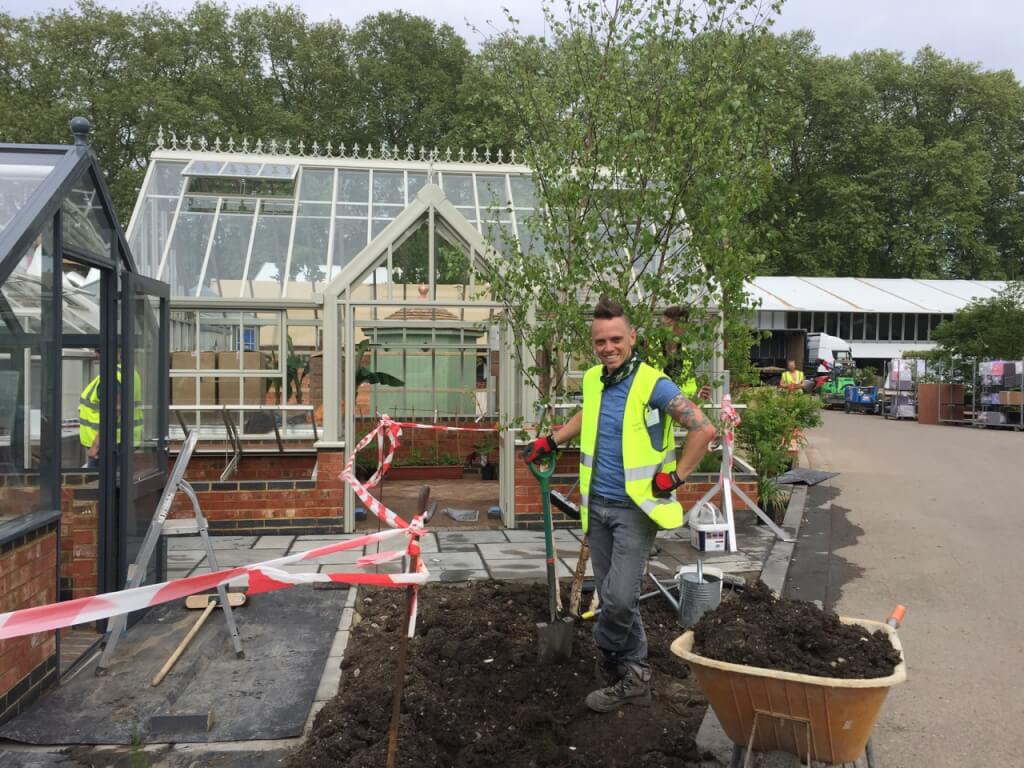
The handle of a spade is also important to consider. If you have smaller hands like me, you may want to look for a handle that fits your hands. Likewise, larger hands will need a bigger handle. If the handle is too big, you may find using the spade uncomfortable as it wobbles about as you use it.
Wooden garden spade handles look nicer but take more maintenance to oil and clean to stop them from cracking. Rubber-coated metal spade handles are easier to look after but don't look as nice.
I would also urge you to consider wearing gloves when using a garden spade. The reason isn't for grip but to avoid blisters. You would be surprised at how many beginner gardeners start to dig enthusiastically and then the next day realise the palms of their hands are blistered and sore!
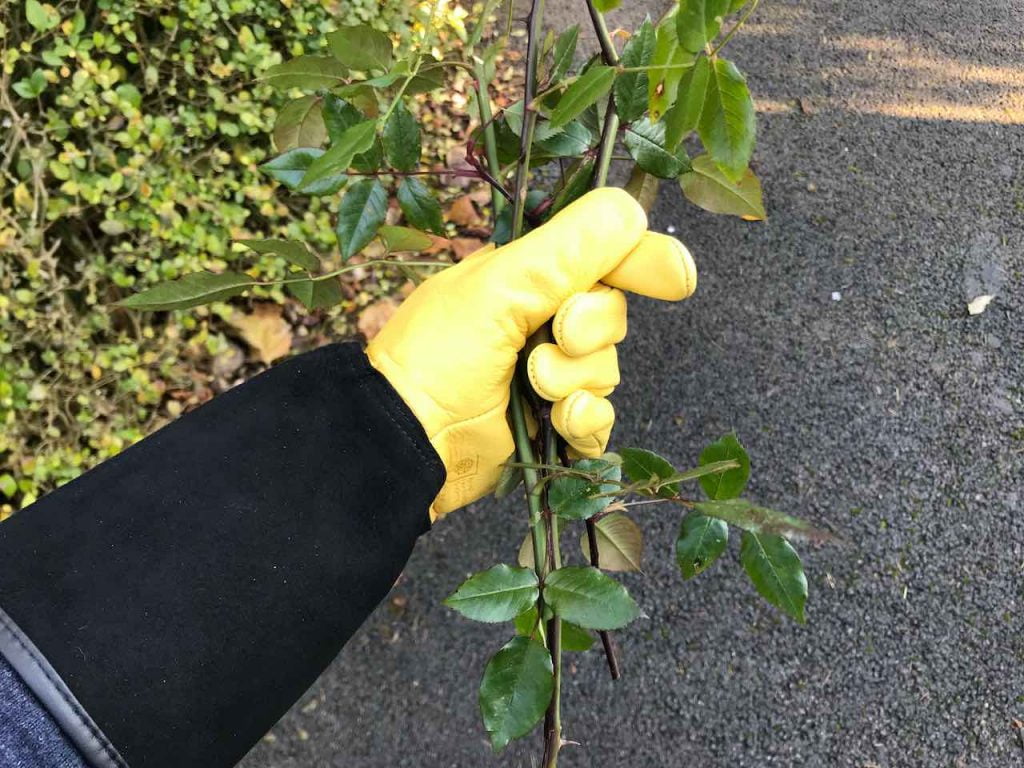
Did you know that you can take my online gardening course and learn how to become a Garden Ninja yourself? Click here for details
If you have clay soil, you'll need something much heavier, even a drain spade, for your digging. I use my drain spade when excavating horrendous clay or heavily compacted soil.
At the Chelsea Flower Show 2018, I used it nonstop to get everything deeper than 5cm into the ground. You wouldn't use it all the time, but mainly to break up compacted soil and improve it.
A drain spade is heavy and brutal for clay or compacted ground. They are heavy, hard work if used nonstop but will cut through even the hardest roughest soil.
The best garden spade is one that is:
I use my awesomely named 'Golden Spade' from Niwaki. It's Japanese, made in one piece, can be sharpened, and is gold.
It's the Diana Ross of Garden Spades; it keeps going and going whilst looking totally over the top. It has been worth every penny so far.
If unsure about which spade to buy, I would go and 'feel' some spades and check their weight, size and comfort in a garden centre or shop. It's a personal thing, but some spades will feel awkward, and others just right. It's a bit like choosing a wand in Harry Potter.
A good garden spade should be able to be sharpened, which is why you don't want a flimsy head. If it can be sharpened, you can maintain it and extend its life. Also, a sharp spade is essential for slicing through turf and small roots.
The garden spade is one of the investment pieces. Depending on how much gardening you do, I would look to spend £35-£65 on a quality garden spade that will last. This is your investment piece.
Secateurs can be another contentious gardening tool. This is usually because everyone has their preferred style of secateurs, from the handle, material weight, length of the blade, cutting diameter, and so on. Shrug that off now; it's not that important for new gardeners.
What's important is choosing the correct type of secateurs.
Secateurs are used for cutting back plant material, also known as pruning. You use garden secateurs to remove parts of plants, shape trees and shrubs and also cut back plants at the end of each season. Secateurs are to a garden what a brush is to dirty a floor. They keep the garden neat and in good health.
The biggest mistake gardeners make is using the wrong type of secateurs to cut plant material. For new gardeners, I would advise that you avoid anvil secateurs. They are used for hard, thicker, woodier stems, dead plant material and very specific pruning.
You may only use these infrequently, if at all when you start. Anvils have a sharp blade that then presses into a plate, like a knife pressing into a chopping block. See below these gorgeous Rolcut vintage anvil secateurs.
Once you start to garden obsessively, sudden tools become items you covet! They may not look it at first, but these are gorgeously crafted secateurs for very specific pruning!
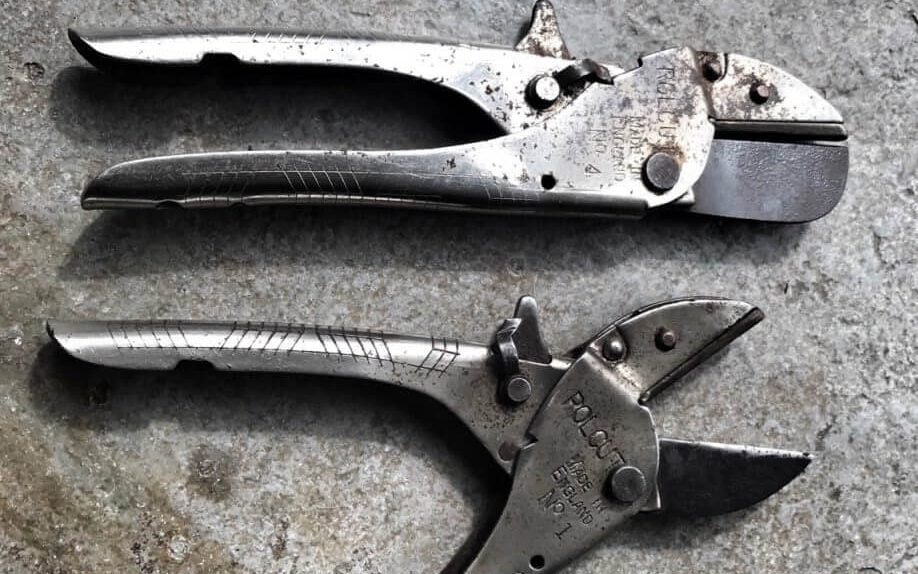
If you use anvil secateurs on fleshy material, it crushes and tears through them, leaving you with battered plants—Prime for disease and plant necrosis (death of plant tissue). Anvil secateurs are great for hard pruning old materials but not so good for beginners. What new gardeners should look for is Bypass secateurs.
Bypass secateurs are far more multi-functional. They have a blade, usually mounted on a spring or coil system, that passes over another metal blade. They can be used for roughly 95% of all pruning and tidying, in my experience. They can be sharpened, cleaned and maintained for years of use. Bypass secateurs are the best all-rounder.
Now again, I'm probably going to set the cat amongst the pigeons on this one. For a brand-new gardener, I would recommend buying a relatively cheap pair to start with. This is because you may not use them consistently until your garden is more established.
Also, the money you save would be better spent on a sharpening block or file to keep the secateurs and your spade sharp! There's no point in having expensive tools if you're going to use them until they are blunt. If you are confused about pruning, why not check out my pruning guide on Youtube here?
You can spend upwards of £100 on the finest garden secateurs, which is fine if like me you spend most of your days pruning. However, as a beginner gardener, look to spend between £20 - £40 for a decent pair of beginner snips. If you're looking for a lifelong Japanese steel investment then spend upwards of £65 plus.
You won't believe just how useful an old kitchen knife can be in the garden. Whether it's for opening the tops of bags of compost, digging out hideous tap-rooted perennial weeds or even marking out seed drills in an allotment, a knife is a must-have gardening tool!
There are two options for this category of garden tool. The budget option is to grab an old knife from the kitchen. In this case, there's little more to be said. Cheap, cheerful, and easy.
The alternative is to go pro and buy a Japanese Hori Hori. I've discussed in detail why they are simply the best tool for garden maintenance in this previous post. The main difference is the width and strength of the blade. With a kitchen knife, you won't want to exert too much pressure before it snaps. They're not made for flexing in soil or dense roots whereas a gardening hori-hori is.
With a hori-hori, it's far stronger and can clean out around roots and dig deep in one motion to loosen compacted soil. However, it's probably not the first thing a beginner gardener would want to invest in due to the cost and scary size of the blade! I'd say start with a kitchen knife and then, if you find it useful, stick a Hori Hori on your Christmas wish list!
The Hori Hori is an essential tool in my garden maintenance tool kit. It's a sturdy, adapted gardening knife that can dig, cut and excavate around plants with ease. For those tricky jobs or digging or removing soil carefully, the hori hori is king in the garden.
You're going to need a knife that is robust and has a sharp blade. Some Hori Horis use serrated blades, but these can sometimes cause too much damage for a beginner gardener. Old kitchen breadknives can be useful as you start out but won't help with roots or heavy excavations.
It's not the sharpness of the hori hori that works but its strength. You will use it to move small amounts of earth, dig out weeds and sever small roots. So, it's more the shape of the knife and blade that's important rather than its sharpness. Safety first!
If you're using a kitchen knife then look to spend between £2-£10. However, I would always prefer to use a hori hori, which costs around £45. A hori hori should last you for life if you don't lose it in the compost bin!
Fancy kneeling on sharp rocks, sitting on wet ground or trying to carry seedlings as they spill spoil all over you? Of course, you don't, and this is where the humble foam gardening kneeling pad comes in. (I'll explain about seedings a bit further down!)
I'm sometimes known for grand statements; I'm always the eternal optimist. A kneeling pad is the best value-for-money gardening tool you will ever buy. You will become lifelong best friends forever with this gloriously self-effacing item.
Costing around £3-£6 from a humble discount shop, it will see you through years and years of rough, unstable ground and screaming knees.
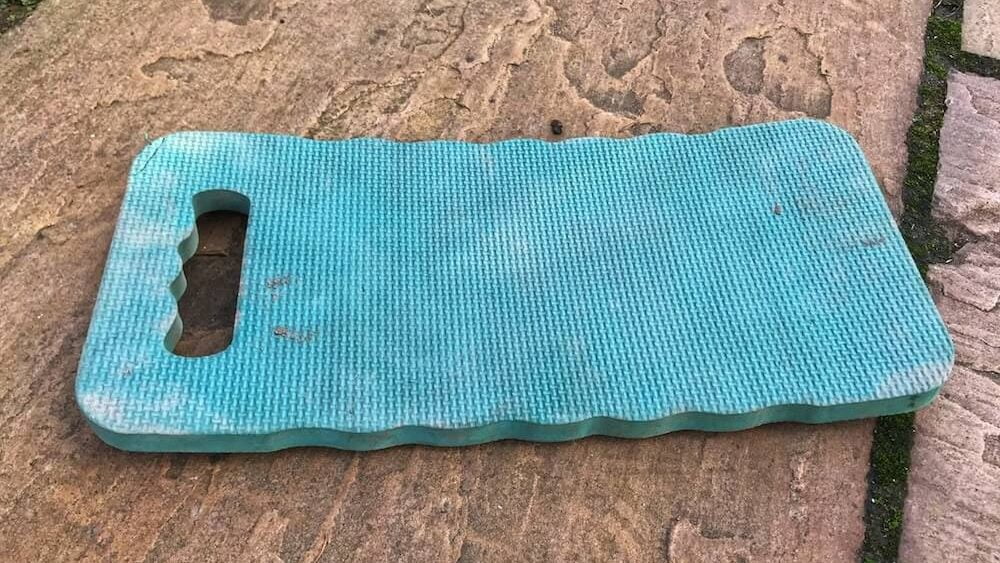
The kneeling pad is not just for kneeling as you weed and plant. It can be used as a makeshift bum guard from the wet ground as you have lunch. I also use it as a mini tray for seedlings and carry small light tools. It also doubles up in my van as an anti-squeak device slotting in between tools or padding out a gap between plants.
Now there are gel-filled options, pads with gorgeous flowery covers endorsed by the RHS or Cath Kidson and the like. However, all that is a mere distraction and likely brings heartache as it gets covered in mud.
The humble foam version can be washed, abused and neglected.
It never fails to provide loving knee protection. Simply put, all you need is the most basic foam kneeling pad. Spend the rest of your cash on Gin and handwash.
Let's finally be cheap with this one: don't spend more than £2-£8 on this vital piece of gardening kit.
So, trying to condense the top 5 tools for a new gardener meant some close contenders missed out. Now, I know some of you will be jumping and shouting for your favourite, but remember, this top 8 list is the start, not the finish line! There's room for every tool at this party. Let's have a look at additional gardening tools you may need.
A garden fork is a quintessential tool for breaking up the ground, unearthing spuds and working in organic matter to beds. The reason it missed the top 5 slots was that for beginner gardeners who may start on small plots or even container gardening, I deemed a spade to be sufficient to begin with.
Before the backlash starts, if you're going to be gardening and cultivating soil, a fork will be essential. Trying to break up large amounts of soil with a spade alone is back-breaking. However, it's probably not needed immediately if you're blessed with loose, crumbly soil or working with containers.
A garden fork or digging fork is a tool that usually has 4-5 teeth or tines that enable you to excavate and break up soil. They are lighter than a spade and allow you to aerate the soil, lift compost or grass clippings and also turn over the soil in the garden. Its strong teeth or tines will quickly turn over large areas.
The biggest issue with garden forks is bent teeth, usually from tree roots or heavy clay soil. It's best to look for a well-forged garden spade with strong teeth. Cheap forks bend easily and then become a pain to garden with.
Another top tip is if you start to work the ground with a fork and it becomes really difficult, stop and re-position the fork. Follow the same buying advice as the spade above, and you can't go wrong.
Aim to spend between £15-£35 on a decent well-made garden spade.
If you've got some spare cash or are feeling flush, the next must-have tool would be a sharpening block or diamond file. These beauties will last a lifetime and are used to help keep your tools nice and sharp. They work with spades, secateurs and knives alike. They take up hardly any room and will help reduce damage to plants and your garden by keeping your tools sharp!
A sharpening block, diamond file or whetstone is used for sharpening secateurs, sheers and even spades to keep them sharp. Check out my guide on how to sharpen tools here.
Look to spend £10-£20 on a sharpening stone and £15-£25 for a whetstone (a more advanced version for sharpening steel secateurs.
So you've started to garden, and things are growing awesome! But then what's this? Weeds?! Inevitably, weeds will appear in your garden from time to time, and that's where the trusty garden hoe comes in. If you don't like the idea of being on your hands and knees to weed a hoe will take the pain out of this chore for sure!
I prefer an oscillating hoe, which has a horseshoe-shaped head. The sharp blade cuts through the ground, making quick work on annual weeds, and does some minor soil cultivation. The oscillating hoe head moves back and forth and is a double-sided blade cutting on both the push and pull strokes. This makes for a super fast weeder action. Less work and fewer garden weeds!
You can pick up a cheap garden hoe for around £15, but the oscillating hoe performs Dutch hoes. They are an investment at £40, and cheaper Dutch hoes may be more effective for your garden or budget. It just depends on the size and frequency with which you hoe. Growing your own vegetables in gardens will require more hoeing in between rows than, say, an ornamental flower garden.

There, we have my top 8 tools for beginner gardeners. This list should help you on your journey into gardening and give you an idea of what you need to take those first steps into the happy world of horticulture. Make sure you subscribe to my YouTube channel next!
Many thanks to everyone on Twitter who engaged in the lively debate. Please leave your comments and feedback below, or why not get in touch on Social Media Tweet, Facebook or Instagram? I'd love to hear from you.
Happy Gardening!



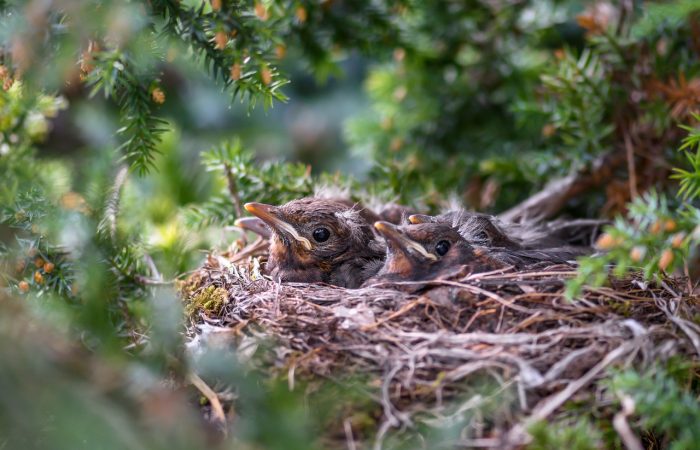
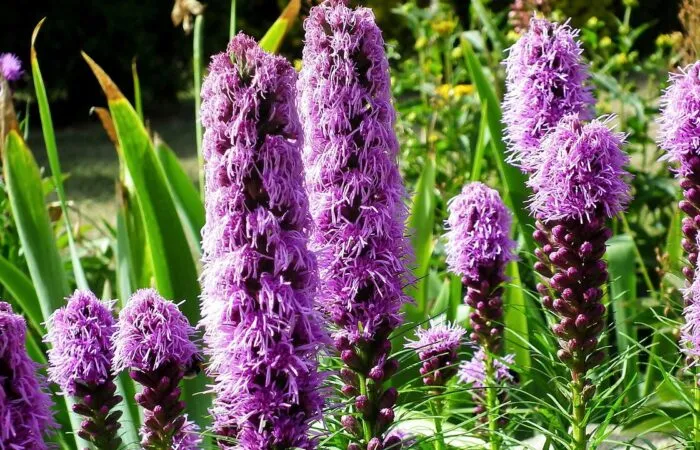

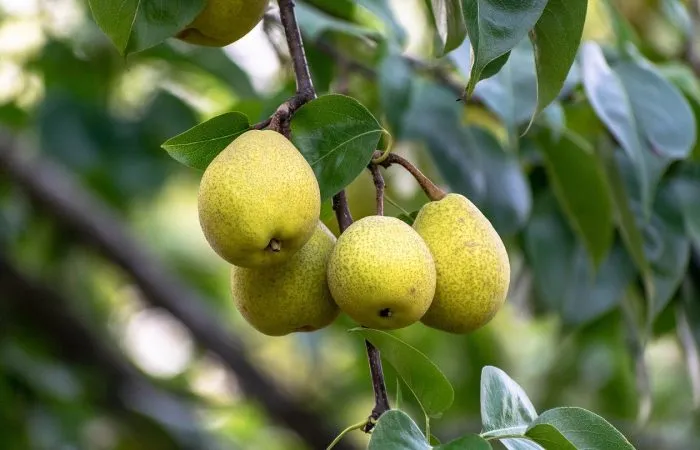
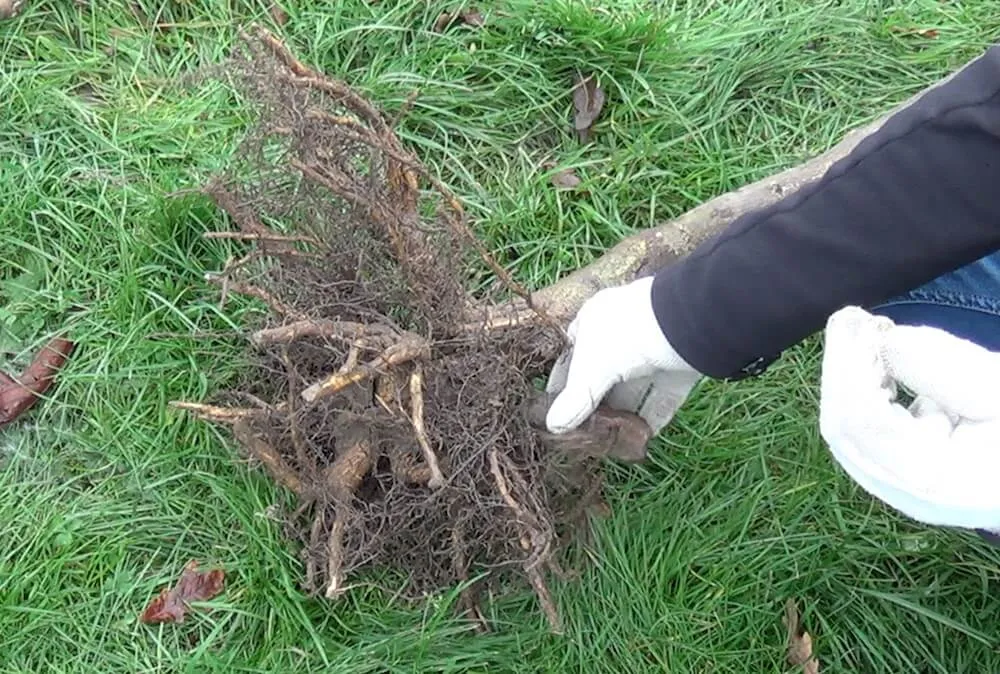
JOIN THE NINJAS

Be the first in line for new Guides, Discount codes and Offers